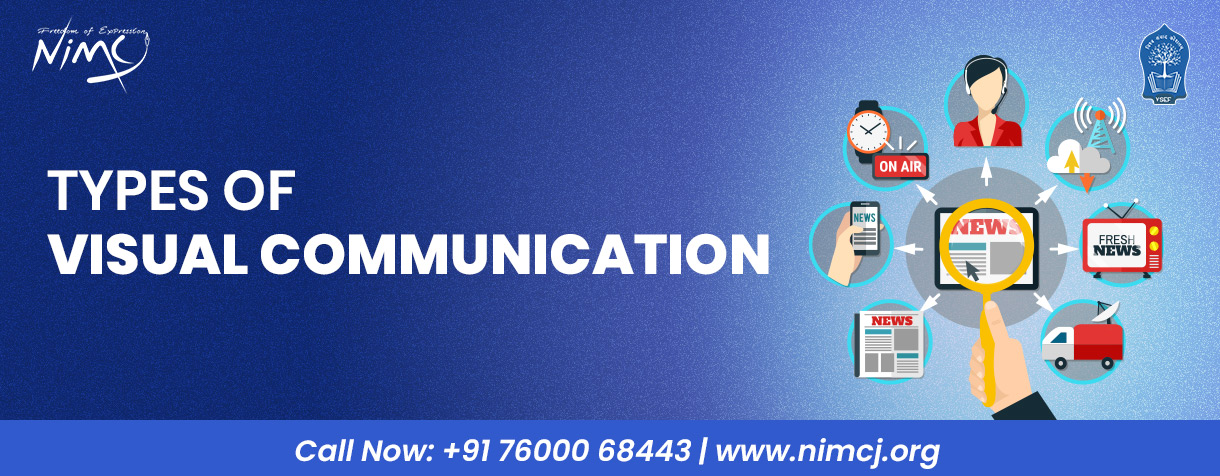
In today’s fast-paced world, where attention spans are short, visual communication has become one of the most powerful ways to share information and ideas. From newspaper layouts to social media posts, visuals help people understand messages faster and remember them for longer.
For students in India who are planning a career in journalism, mass communication, advertising, or digital media, understanding the different types of visual communication is essential. Let's explain the concept in detail with examples, so you can see how visuals are used across industries.
Visual communication is the process of conveying information through visual elements like images, symbols, colors, videos, and designs. Unlike text-only communication, visuals can express complex ideas in a simple and engaging way.
Example: A newspaper infographic about the Union Budget makes financial data easier to understand compared to a long article filled with numbers.
Here are the main types of visual communication with examples:
Photos are the most common type of visual communication. They capture real moments, tell stories, and connect emotionally with the audience.
Illustrations, drawings, and digital graphics make abstract ideas clear. They are used in textbooks, magazines, marketing campaigns, and even memes.
Typography is not just about letters; the style, size, and arrangement of fonts affect how people perceive a message.
Infographics combine text, numbers, and visuals to present information clearly. They are widely used in journalism and corporate reports.
Videos are one of the strongest forms of visual storytelling. They combine moving images, sound, and text for maximum impact.
Animations bring static visuals to life. Motion graphics are widely used in advertisements, online content, and educational platforms.
Symbols are universal signs that communicate meaning instantly. Icons make digital interfaces user-friendly.
Slides, charts, and visual aids make professional and academic communication more impactful.
Colors influence emotions and decisions. Brands and media often use color psychology to strengthen their messages.
Mastering visual communication can open doors to careers such as:
At the National Institute of Mass Communication & Journalism (NIMCJ), Ahmedabad, we integrate visual communication into all our programs—print journalism, electronic media, advertising, corporate communication, and digital media.
Visual communication is more than just pictures—it’s a powerful way of telling stories, sharing knowledge, and connecting with people. From journalism and advertising to digital media, every industry relies on strong visuals.
If you’re passionate about media and want to build a career where creativity meets communication, learning different types of visual communication is the first step.
Inquire now for admissions at NIMCJ. Take the first step toward your dream media career.
Read Next Blog: The Rise of Mobile Journalism
24 Sep 2025
Post by : NIMCJ